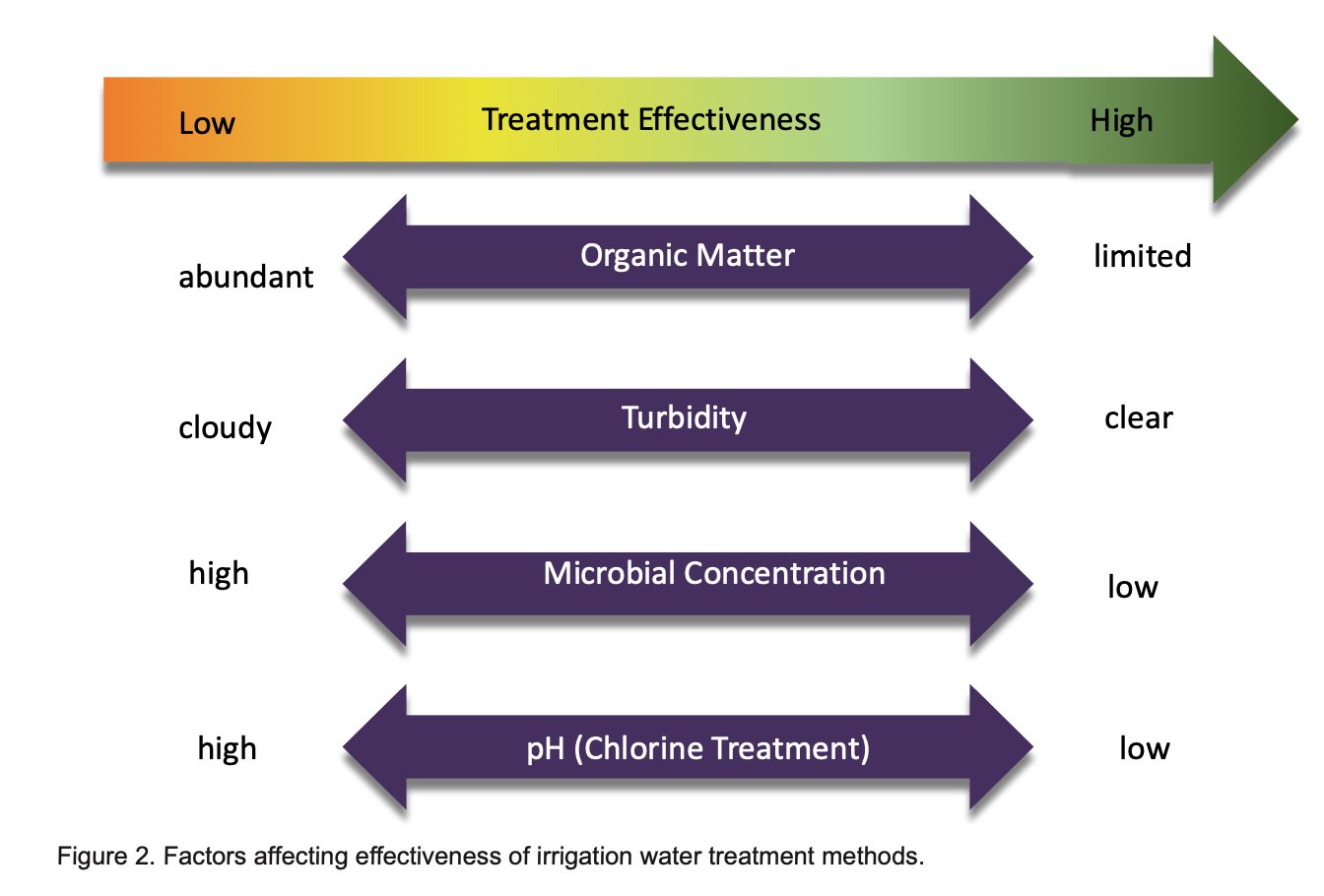Physical, chemical, and biological parameters, such as organic matter, turbidity, microbial loading and characteristics, temperature, and pH determine the background quality of irrigation water. The type and effectiveness of the agriculture water treatment method you choose can depend greatly on these parameters. To find out how each of these parameters impact agricultural water quality and treatment methods view the sections and videos below.
Chemical and Physical Water Quality
- Organic matter refers to organic substances broken down from plants, animals, microorganisms, and from geological origins that can be found in water sources. Since organic matter can consume chemical sanitizers, mainly chlorine, having a water source with high amounts of organic matter in it will require you to add more sanitizer for it to be effective.
- These organic substances also contribute to the turbidity of the water supply, which is a measure of the water’s clarity (USGS, 2018). The more turbid a water source is, the more difficult it is to see through it. Turbidity provides food and a "hiding" place for organisms and pathogens, shielding them from disinfection treatments such as ozone, UV, and chlorine (USGS, 2018; WRC, 2018a). Meaning the more turbid your water source is the more sanitizer you’ll need to inject into your irrigation system. If you prefer to not increase the amount of product used, then it is best to pre-treat your water by filtering it to remove sediment.
- Temperature can impact water treatment because chemical reactions often increase at higher temperatures. For example, chlorine treatments are less effective at low temperatures (WHO, 2004). However, the impact of temperature on treatment effectiveness differs between treatment methods. Temperature also affects pH; as irrigation water temperatures increase, pH decreases.
- pH is a measurement of how acidic or alkaline (basic) water is. The pH of the irrigation water affects the efficiency of certain treatments. For example, ozone treatments require different dosages based on pH and chlorination is more effective in water with lower pH (EPA, 2018).
- The hardness of a water source is determined by the amount of minerals in the water. An excess of calcium and magnesium in the water can lead to scaling of irrigation lines. This buildup can decrease the effectiveness of water treatment processes like UV treatment, making it important to minimize scale deposits in the irrigation system.

- Operational considerations for production agricultural water quality (DiCaprio YouTube video, 23:18 min., posted June 23, 2021)
Microbial Water Quality
- The concentration of microbes in irrigation water, or the microbial load and the characteristics of the microbes can affect treatment effectiveness. Different types of microbes may require different treatment methods, sanitizer concentrations, or contact time (CT). For instance, Salmonella is a heartier microbe than E. coli and often needs a higher dose and/or contact time when treating irrigation waters with a chemical sanitizer like peracetic acid (PAA).
- FDA Regulations concerning microbial water quality.
- A brief history of water quality metrics (DiCaprio YouTube video, 33:23 min., posted June 23, 2021)
- Extension article: E.coli, Water Quality, Food Safety, and Human Health (C. Rock et. al., 2018 University of Arizona Cooperative Extension) (PDF 607 KB)
